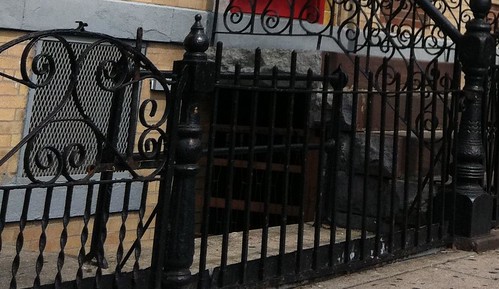Sitting in her new airy room in Bushwick, Brooklyn, Jill, 26, recalls the days when she lived in an illegal basement in Ridgewood, Queens. Cell phone signals did not exist, bath towel always had a rotten smell, and everyday was a challenge making herself invisible to other tenants in the three-storey building.
“I didn’t feel I have any privacy, because the landlord would watch me all the time and criticize my utility usage,” says Jill (whose name has been changed to protect her identity). “Doors and curtains must be always closed in the evening, because the landlord was afraid that other people would see the light and know that she was illegally renting me the basement.”
For Jill, the “basement solution” has more to do with housing shortage than financial hardship, and she moved out after almost one month when a proper apartment that met her needs became available. But many other basement dwellers are not that fortunate. Because of the current economic downturn, housing has become even less affordable, forcing legal accommodations out of reach for some renters, according to the Metropolitan Council on Housing, New York’s oldest tenant union.
“There’s a housing shortage, and a lot of people are desperate for housing and have no better alternative they can find, so they rent an illegal apartment,” says Met Council director Mario Mazzoni. “In some cases, they are people whom other kinds of landlords would not agree to rent to, for either they don’t have an income or they can’t prove their income, so they are really shut out of most of the legal housing market.”
According to reports by the NYC Department of Buildings, illegal conversions have increased more than 60 percent in the last three years, during the height of the financial crisis. Queens has been dubbed by the media as the illegal conversion capital of the city, where they have many one or two-family homes with an illegal basement apartment. There have been worse cases when a legitimate residence is subdivided into small, inadequate apartments. Earlier this year, a case was uncovered in the 102nd Precinct where a one-family residence was divided into four or five apartments, housing 20 to 30 adults and children. Such practices are extremely dangerous, with serious fire hazards.
“When you have a great number of people living in the house, they are most likely using television, perhaps hot plates, irons, radio, and other devices,” says Queens Borough spokesman Dan Andrews. “This will put an additional strain on the house’s structure, and the wiring is likely to be inadequate to provide the electrical power need of all the people living in that building, posing a serious danger of fire.”
In Queens this year, there have been several fatal cases where fires erupted in illegally converted apartments with inadequate egress. According to Andrews, the possibility of a fire in illegal residences will increase in the coming winter, when electric consumption runs higher.
In the case of illegal basement apartments, the tenants are not only exposed to potentially fatal fire hazards, but also faced with additional health risks such as the accumulation of toxic substances and sunlight deficiency.
The landlord is usually in the spotlight when an illegal conversion case is uncovered. The maximum penalties for property owners now reach as high as $25,000 and one year in jail. Even so, a trend has emerged where more and more tenants are taking housing conversions into their own hands to save money, or earn some extra income in this tough economy.
“Much more of an issue is the illegal conversions that the tenants make, for the purpose of cramming other people into the apartment,” says Roberta Beinstein, president of the landlord union Small Property Owners of New York. “I’ve heard of a terrible case this morning, when the tenants did not pay rent but divided the rooms of a two-bedroom apartment into cubicles and sublet those. Owners would know this is a firetrap, and they would never do that.”
But in other cases, both home owners and tenants are not the culprits but victims of greedy real estate agents, according to Andrews.
“The home owners in many cases rent an illegal apartment without knowing it’s an illegal apartment,” he says. “There have been manipulative real estate agents who sell houses by telling home owners that they can rent the basement to collect extra mortgage money, and the buyer believes and is unaware that it’s illegal.”
While illegal conversions look more serious in Queens, Andrews believe it is not a lesser problem in other parts of the city.
“Illegal conversions are more visible in Queens because of the fact that there are many one and two-family homes,” says Andrews. “But there could be a lot of illegal dwellers in, let’s say, a sixth story building. That’s a vertical problem, off the street and more difficult to see, but still can be very traumatic in terms of the number of individuals living in a building illegally.”
To counter illegal conversions, NYC Department of Building and the Queens Borough President Office has organized taskforces and campaigns to raise public awareness. However, the Met Council for Housing believes illegal conversions boil down to the lack of affordable housing for those in need.
“The city does not have enough decent housing to accommodate all of the people and certainly do not have enough options for people who cannot afford the legal housing market,” says Mazzoni.
This issue, for the authority, is not a small challenge to face.
“There is a lot of affordable housing being built here, but you cannot build it overnight, and there never seems to be enough,” says Andrew. “As soon as it’s built, it’s occupied.” He adds: “The government here really aren’t busy fighting illegal conversions to put people out on the street, we really want them in housing that is safe and not dangerous.”

